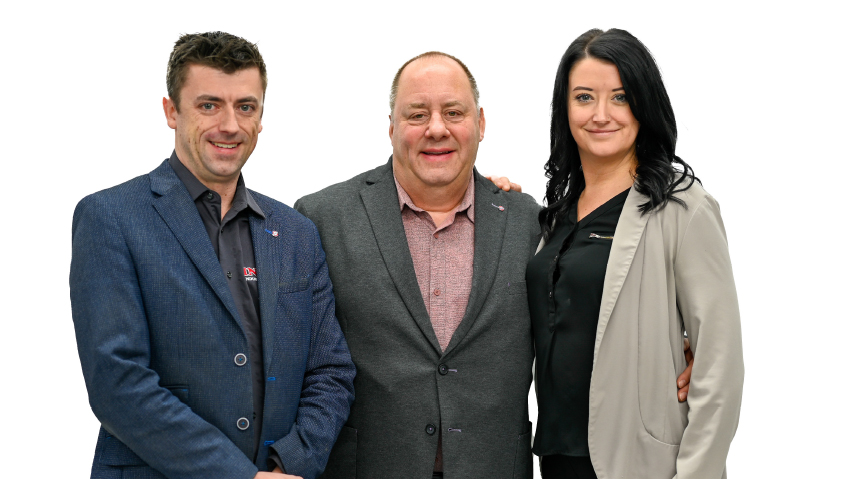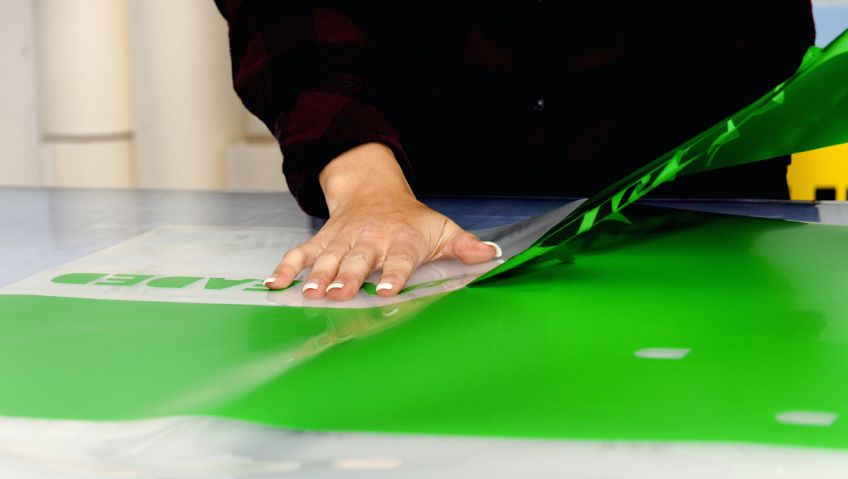In today’s world of rising costs, building envelopes must be more efficient and cost-effective than ever. Yet this quality must be balanced with the need to build in sufficient numbers to meet demand. In Toronto, Amvic Building Systems continues to push the capabilities of expanded polystyrene (EPS) to help builders accommodate Canada’s need for housing.
Vice President Patrick McMahon says that the company has maintained its growth for twenty-five years and is pushing forward into a new era. “We have certainly travelled with the increased demands on EPS, and we have certainly been part of that increased growth through homebuilding,” he says.
Amvic’s story began in 1997 when founder Dr. Victor Amend applied his Ph.D. in building science to the private sector. Steady growth followed, with Amend himself providing much of the fledgling company’s research and development. Today, Amvic operates two plants in Ontario, a third in Calgary, and a licensed production facility in Utah to supply the U.S. market.
As Amvic celebrates its twenty-fifth anniversary, the company is hardly resting on its laurels. McMahon sums up how the company is celebrating in a single word: “quietly.” He and his colleagues recognize more than ever the issues facing our world today and are always refining what makes Amvic stand out—its innovation, design, customer service, and quality.
“We’re continually evaluating what we do and raising the bar to be better,” he says, adding that Amvic is committed to creating and manufacturing products that improve comfort, quality, resilience and performance; we do it every day,” proud to have bettered the well-being of anyone who has used its products in their buildings. “It’s been a quiet celebration for the company but, that said, it’s also one of great pride.”
As part of its ongoing product development, Amvic is offering two new products to help its clients and end-users increase the quality, efficiency and sustainability of their building envelopes. The additions of Envirostrap and Amrad will further raise Amvic’s ability to offer versatile building envelope improvements at manageable costs.
Envirostrap combines the insulation of EPS with the support of two integrated plywood furring strips. These deliver a dual solution, incorporating both insulation and finish attachment surfaces and are applicable in both above grade and below grade interior applications. The furring strips can either protrude from the foam surface or be fully recessed within it, for exterior cladding installation.
Amvic’s newest development is Amrad, insulation paneling designed to mitigate and remove radon gas. Amrad replaces the need for 4” (102mm) gravel and a dedicated soil gas retarding membrane. This panelized solution with its unique channel design, void percentage, film and foam density creates a strong and durable panel, giving builders the ability to build an insulated concrete slab while meeting radon building code requirements and improving the interior air quality for the occupants.
The panel is 48×48” (1219x1219mm), molded from high-density, closed-cell, Type II EPS insulation. Amrad comes as a 3.5” (89mm) thick panel at R12 (RSI 2.11) and is also available in 4.5” (114mm), R16 (RSI 2.82) panel.
McMahon notes that these products, like many in Amvic’s lineup, reflect the company’s goal of improving the building envelope. “When you look at all the components of our products, they’ll all have a degree of enhancing that envelope, one way or the other,” he says. “Comfort, quiet, safe, energy-efficient and responsible, resilient to weather extremes.”
To ensure adequate production levels, and that costs remain manageable for end-users, which is more important than ever in today’s economy, Amvic is investing in automation. This evolution has been in two distinct parts: firstly, and more visibly, is robotic manufacturing equipment to accelerate and enhance production.
Secondly—and more behind-the-scenes—is Amvic’s investment into automation software to aid in all company operations, from warehousing management to lead management to communications with customers. In McMahon’s words, “these investments increase Amvic’s productivity, quality, and business intelligence, improving our customers’ experience working with us. We want to make sure we are able to improve our efficiency so we can improve our costs and provide a better product to the marketplace,” he says. “We also want to ensure that we are accurate, so the degree of accuracy is important to us.”
Additionally, Amvic advances its shipping and receiving processes, essential in an era of supply chain snags, with more of its product coming and going from its plants. “How do we streamline that process?” he asks rhetorically. “How do we take away time delays wherever we can? How do we move product in and out of our plant in an expedient manner?”
While more recent months have offered expansion opportunities to add new distributors, McMahon cautions that it is easy to be overstretched and not be able to provide the same level of service. “At the end of the day, you can only take on so much demand, and you only have access to so much raw material,” he says. “Focus on your current customer as they will be the ones with you for the long term.”
This commitment to quality reflects the company’s history as a company focused on innovation and design. McMahon says that, “in reality, we design exceptional products, then we had to become an excellent manufacturer to ensure the quality and supply chain were in our control. We became a manufacturer to support our products, our innovation.”
Finally, he notes the paramount importance of a strong communications policy and strategy. “Communication is more than just a greeting, more than just celebrating the wins,” he remarks. “Communication is being able to have tough conversations, to be truthful, mindful, and empathetic to those around you.”
Forged during the tough days of COVID, he relates that Amvic’s communication strategy evolved to not assuage staff with vague promises but to lay out the occasionally unpleasant truth, get ahead of the curve, be straight, be honest. “For us, communication was really critical, and the company put a lot of focus and a lot of discipline around that.”
As Amvic celebrates twenty-five years, McMahon retains a quiet pride in the accomplishments of his colleagues. “If I’m going to celebrate anything on our twenty-fifth anniversary, it’s the fact that our people put customers and other employees first; they are focused on not disappointing those that have always supported us. The dedication, perseverance, and resilience of the staff has been amazing. This is worth celebrating.”
He expresses confidence that Amvic’s ongoing commitment to quality over market penetration will continue to drive growth above all else, and give good returns. “People like our product, they like the design,” he says. “That has created significant growth for this company over the last twenty-five years, and it will continue.”






